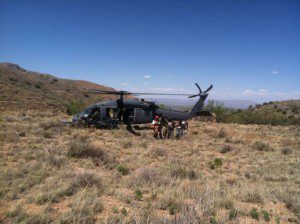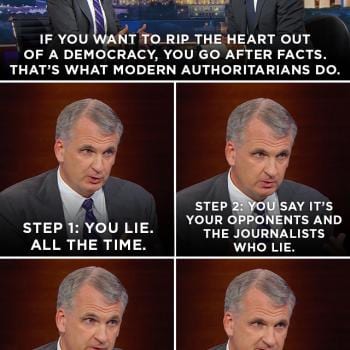
Matthew Remski emailed me today, bringing my attention to an article he has just published at Elephant Journal. In his article he discusses the recent death of Ian Thornson, a Buddhist practitioner in S.E. Arizona at Geshe Michael Roach’s Diamond Mountain University.
The death is indeed a tragedy and it highlights again the need for some sort of oversight in Western Buddhist circles. For as small (numerically in adherents) as Buddhism is in the West, it conveys enormous social influence and provides, for most, a safe and comprehensive alternative to dominant Western ideologies of consumerism and Christianity. And because it is relatively small and ‘exotic’ to many in the West, a relatively small number of incredibly wonderful individuals have been able to give people a very good impression of Buddhism as a whole. But all of that could change quite rapidly if certain ethical issues in Buddhist traditions are not addressed.
My Own Ties to the Story
Geshe Michael Roach was one of my first teachers, first online through his ‘Geshe’ degree courses (a series of 18 lengthy courses designed to replicate the training program of a Tibetan Buddhist Geshe). ‘Geshe’ is a degree or title generally similar to the ‘phd’ in Western academia. I found Roach’s teachings (which were recorded in the 1980s and 90s to my knowledge) to be excellent, close to the sources, with careful attention to language and relying on examples and explanations that made sense to Western audiences. In 2004 I came to England for my MA in Buddhist Studies, focusing on Mahayana and Tibetan Buddhism in particular. When it came time to choose a thesis topic, at first I wanted to write about Geshe Michael Roach (I believe one of Richard Hayes’s students from his time at McGill did such a topic around this time). When faced with the tedium of transcribing many of his talks – anyone who has done this knows how horribly slow and boring it is, and I had hours upon hours of material to look at if I wanted to pursue the topic – I switched my topic to another area close to my heart: comparative ethics.
In the meantime, though, I did travel in 2005 with two friends to Ireland to see Roach and Lama Christy McNally give talks on Buddhism and Christianity. Just before the trip I wrote a short piece called When all signs say…. ‘cult’, obviously expressing my reservations about the whole thing. I was traveling with two fellow Buddhists, one an ordained member of the WBO, now Triratna Buddhist Order, which has had its run-ins with cult accusations, and a woman very committed to the NKT – New Kadampa Tradition, a splinter-group from the Dalai Lama’s tradition, the Geluks. So I was well aware of both the fuzziness of Buddhist traditions and the irony of worrying about going to see a ‘cult’ leader with two people who were, to some people at least, happy and well-adjusted cult members.
Two other quick asides: 1) I have studied ‘cults’, or as we like to say in the PC world of academia, “alternative religions” with a remarkable sociologist, Robert Balch, and lived with one such group – Hare Krisnas (ISKCON) in Vancouver, BC for a few days to get the full experience of ‘alternative religious’ life. and 2) I continued to follow Roach with decreasing personal interest and increasing academic/sociological interest around this time and onward.
In any case, in Ireland we saw and met with Michael and Christy. They were nice, giving the somewhat flowery talks they were becoming known for. When I met and spoke with Ven. Jigme Palmo (now on the board of directors for Diamond Mountain U) she invited me to Arizona to what was then a very new establishment in the desert just outside the tiny town of Bowie. Over the summer, with just a couple emails, Ven. Palmo had connected me with a student of Roach – I forget his name now – who offered me one of his tickets to the private teachings of the Dalai Lama (when I say private, I mean 800 or so people in a hotel ballroom, as opposed to the ‘public’ teachings at the University of Arizona athletic center in front of 10-15,000 people). So, I flew to AZ, saw the Dalai Lama a couple times, and spent some time with a few of Roach’s students. Roach and his students had reserved a large section in the private talks and he and McNally were there in the midst of it.
That was about as ‘close’ as I got to it all. From there things looked relatively normal (whatever ‘normal’ is in Western Buddhism). Sure, Roach was breaking away in some ways from tradition, but no more, it seemed, than Chogyam Trungpa (founder of the Shambala Tradition and Naropa University) or Geshe Kelsang Gyatso (head of the NKT) or Sangharakshita (head/founder of the FWBO/TBO). This was the ‘wild west’, both literally and metaphorically, where rules seemed to exist only to be bent. I didn’t wind up visiting DM University – about 2 hours out of Tucson, but only because of time constraints. And after all of that I fell back into a busy academic life in Montana and ‘sitting’ with a nice Vipassana community.
Buddhism in the West (and the world today)
I’m still interested in Roach, but just academically these days. Like Trungpa, Kelsang Gyatso, and Sangharakshita, I think he is both charismatic and brilliant. But the organizational structure built around that ‘figurehead’ is what worries me. Matthew’s article: Psychosis, Stabbing, Secrecy and Death at a Neo-Buddhist University in Arizona does a great job of outlining the problems of that structure:
Secrecy is endemic to both the structure and the metaphysics of Roach’s organization. Buddhist knowledge was secret. His relationship with McNally was secret. Whether or not it involved intercourse was secret. The instructions for rituals were secret. The nature of his realizations was secret. The locations and identities of many of his teachers were secret. Tantric practices were secret. In the absence of physical coercion, secrecy was the key currency of Roach’s power.
This isn’t just a ‘Western’ or ‘Neo’ Buddhist issue, either. As I wrote last December:
And in much more controversial news, WH of The Masculine Heart broke the story (to me at least) about Kalu Rinpoche, a young Tibetan monk -and believed reincarnation of the previous Kalu Rinpoche, a highly revered Buddhist teacher -who posted a video with allegations of abuse and attempted murder at the hands of his elders. What caught my eye was the statement by WH: “It seems monastic systems are fundamentally flawed – we have seen it in Catholic history, and here we see it in a Tibetan tradition.”
While monasticism itself may not be flawed, it is clear that certain institutions have come to be flawed. And it is in the best interest of all of us to do what we can to fix them. As Matthew points out, there are vows that many Buddhists take which forbid them from criticizing their teacher:
A disciple of the Buddha must not himself broadcast the misdeeds or infractions of Bodhisattva-clerics or Bodhisattva-laypersons, or of [ordinary] monks and nuns — nor encourage others to do so. He must not create the causes, conditions, methods, or karma of discussing the offenses of the assembly…. (From the Brahma’s Net Sutra)
Ironically, I remember Roach, in one of his pre-2000 teachings, imploring students to take a modern, open understanding of this and to actually be very critical of teachers -including himself- who may be teaching wrong views or practices. As elsewhere there is the warning that wrong views and acts by a teacher could lead both the teacher and students to many lifetimes in the hell realms. While we might take this literally if we wish, we can also look at what appears to be spiraling, physical abuse, and ultimately death by exposure and dehydration as a fairly graphic depiction of what we can imagine hell to be in this life.
Toward the future
Matthew Rimski makes two sets of requests in his article: one to the board of directors at Diamond Mountain and the other to the broader Buddhist community. Both deserve to be heeded in full. To the directors at DMU he implores that they invite law enforcement and other outside authorities to conduct a full investigation, that Roach step down from the board and stop teaching until further notice, along with several other well considered recommendations.
For the broader community, Matthew (naming many of the ‘pro tour’ Buddhists of the West today) asks:
- Please take time to investigate Roach’s history and teachings, and publish your thoughts on the broader Buddhist life to those students of Roach who are confused, in distress, and perhaps hungry for a more grounded cosmology. A series of calm, welcoming, non-judgmental open letters might be most helpful.
- Please disclose any protocols for mental health and physical safety that you have designed as leaders or members of Buddhist communities that would be helpful to the Diamond Mountain Board as they go through a necessary review of their own practices.
- Offer gratis counseling/conversation to any Diamond Mountain practitioner who might reach out for a broader view.
I also call on the Private Office of His Holiness the Dalai Lama to review these events and to consider reiterating and strengthening its censure of Michael Roach, first initiated in 2006.
I’ll go further to suggest an official global Buddhist oversight organization. A transparent clearing house of information and informed discussion on all aspects of Buddhism in the world today. Until now, especially in the West, students have had little to help them determine whether a Buddhist group they were visiting was legitimate or potentially dangerous. In the groups I mentioned above we have seen suicides, murder, massive sexual impropriety, and now the death of a man in the Arizona desert. Not all of this could necessarily be avoided, but we do have a responsibility to speak up. Right now, many who do speak up, such as those behind the New Kadampa Survivors network, have no legitimate forum to air their grievances. So the internet has become a battle-ground of ‘survivors’ and defenders, which doesn’t bode well for the future of Buddhism in general.
Part of the problem with Roach and others is that in their breaks from previous traditions they stepped outside of all oversight. A general oversight association couldn’t eliminate the rise of future problems like this, but it could go a long way in terms of simply:
- requesting reports on activities, membership, and activities from Buddhist groups. Those that wish to be secretive would be listed as such. People new to Buddhism and unsure about their group could check it out, expecting fair information.
- encouraging people to report abuses or unsafe conditions and expect such reports to be taken seriously – whether internally or by alerting outside authorities.
Currently there is the Rick Ross Institute, which has some material on the FWBO and NKT, but it’s clearly out of date. In fact, a quick internet search finds absolutely no current list for potentially destructive religious groups. Buddhanet.net, while it is a wonderful resource, also offers little help. In searching for “Michael Roach” we find only links to his teachings and Dharma centers associated with him.
In the past, Dharma teachers have suggested codes of ethics, such as Rev. James Ford’s here, and open letters were written en masse after the Shimano scandal a couple years ago, as compiled and discussed by NellaLou here.
If abuses continue with either no response or only late reactive responses, even in what look like small corners of the Buddhist world, we will no doubt here calls similar to those of academic Michael Ruse in regard to the Catholic church:
“Let me say at once that, unlike Dawkins, I don’t necessarily want to see this as the end of religion or even of the Catholic Church in some form. I stress that although I cannot share the beliefs of Christians, I respect them and applaud the good that is done in the name of their founder. But I do now think that as presently constituted, the Catholic Church is corrupt and should be eradicated.”
Update:
Here are three documents, reported to be from Lama Christy McNally (A Shift…) her attendants (Statement on…) and Geshe Michael Roach regarding recent events at Diamond Mountain. They are quite disturbing and, I believe, only reinforce the sense that things were out of control in an unhealthy and unsafe way for several months, if not longer, at Diamond Mountain.
http://www.scribd.com/doc/90220087/A-Shift-in-the-Matrix
http://www.scribd.com/doc/91072639/Statement-on-LC-by-Vens
http://diamondmountain.org/an-open-letter-from-geshe-michael











